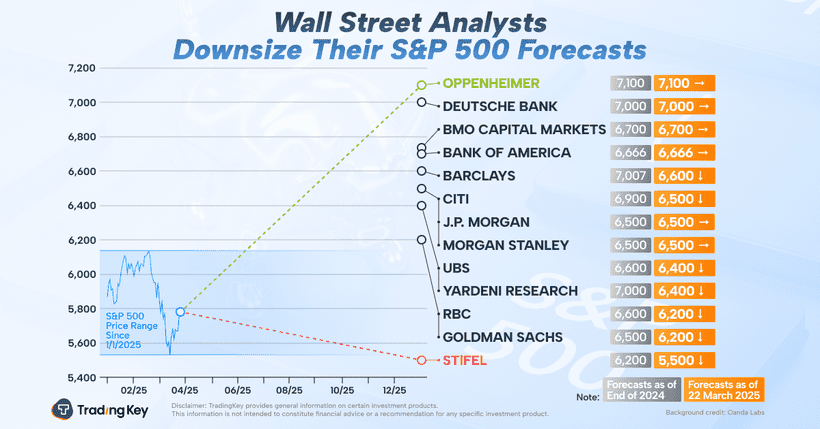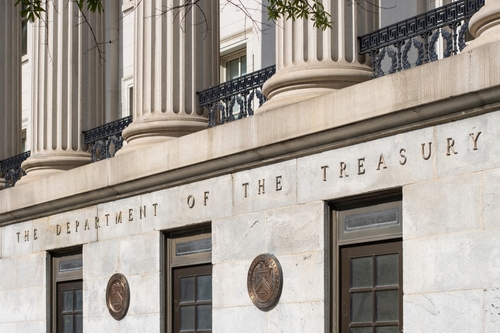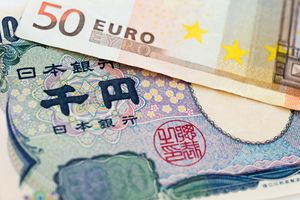MORNING BID AMERICAS-No quarter for Wall Street

By Mike Dolan
LONDON, March 31 (Reuters) - What matters in U.S. and global markets today
By Mike Dolan, Editor-At-Large, Financial Industry and Financial Markets
Gold XAU= is homing in on its best quarter since 1986, telling you everything you need to know about what's proven to be a dire quarter for Wall Street. April offers little chance of reprieve as it looks set to kick off with the start of a global trade war.
I'll get into all the market details below before taking a look at rising fears that the U.S. could take the once-unthinkable step of weaponizing emergency dollar access.
Today's Market Minute
* Trump said this weekend that the reciprocal tariffs he is set to announce this week will include all nations, not just the 10 to 15 countries with the biggest trade imbalances.
* Gold is heading for its biggest quarterly gain since 1986, as investors embrace the safe-haven appeal of bullion.
* Trump says he's "pissed off" at Russian President Vladimir Putin and will impose secondary tariffs of 25% to 50% on buyers of Russian oil if he feels Moscow is blocking his efforts to end the war in Ukraine.
* Dude, where's my car? Toyota buyers are facing long waits for delivery of their new cars as demand for gasoline-electric hybrids booms.
* Billionaire Elon Musk on Sunday handed out million-dollar checks to two voters in Wisconsin and promised smaller payments to others who help elect a conservative candidate to the state's top court in a closely watched election.
No quarter for Wall Street
There was little to calm markets this morning, as the prospect of universal U.S. import tariffs returned to the radar over the weekend. The turbulent end to last week has barreled into Monday, as stocks across the globe fell sharply on the final day of March.
Japan's Nikkei .N225 lost 4% in its biggest one-day drop since September. And South Korea's Kospi .KS11 dropped 3%.
The S&P 500 .SPX is already on course for its worst month since 2022 and its worst first quarter since the pandemic in 2020. Futures ESc1 show those losses may extend even further on Monday.
The White House tariff plan should be announced in full on Wednesday, though the range of possibilities for what will eventually emerge is very large. President Donald Trump jarred markets this weekend by saying all countries could be subject to tariffs, not just the 10 to 15 with the biggest trade imbalances.
The unusual degree of uncertainty being generated by the administration could ultimately end up creating as much discomfort as the impact of the actual tariffs.
On the growth front, more worrying numbers came out on Friday as real personal consumption spending was below forecast. This dragged down first quarter U.S. GDP estimates, while the University of Michigan showed long-term inflation expectations climbing.
Even the Atlanta Federal Reserve's gold-adjusted "GDPNow" model, which strips out the distortions created by high gold bar imports in January, is signaling that the U.S. economy contracted during the quarter.
That fact and the flight from stocks has had a direct impact on interest rate expectations. Three Fed cuts in 2025 are once again being priced into Fed futures. Two-year Treasury yields, which plunged back below 4% on Friday, dropped another 7 basis points on Monday to just 3.84%.
Investors appear increasingly less confident about what is going to happen next on either the economic or policy fronts in the U.S. These concerns were amplified over the weekend, as Trump's statements on a whole range of issues seemed more erratic than usual.
Asked whether he was worried about rising prices for foreign autos and other imports, Trump said he "couldn't care less" and urged consumers to buy American-made cars instead.
He also said he was not joking about seeking a third presidential term, which is barred by the U.S. Constitution, though he said that it was too early to think about doing so.
In geopolitics, Trump said he was "pissed off" with Russian President Vladimir Putin for dragging his heels on the Ukraine peace deal, threatening to extend secondary sanctions on countries who traded with Russia as a punishment for delays.
And he then criticized Putin for questioning the credibility of Ukrainian President Volodymyr Zelenskiy's leadership - something he has done himself over the past month.
Markets responded to this accordingly. Wall Street's fear index, the VIX .VIX, climbed to its highest in more than two weeks, gold topped $3,100 for the first time, and safety seekers also bought Japanese yen JPY=.
European stocks .STOXXE, which have outperformed this year with gains of more than 10%, fell back on Monday too, but the euro EUR= held up against a softer dollar.
Monday's economic diary is quiet, but it's a big labor market data week on top of the much-anticipated tariff announcements.
Let's now turn back to the rising concerns about erratic U.S. policy and consider the risk that the dollar could potentially be weaponized in a new way.
'Coercion' fears include hijacking dollar dominance
There may be a thin line between 'transactional' and 'coercive', but U.S. international economic policies judged to have crossed it could weaken the foundations of the dollar's dominant role in international finance.
Washington has long used its economic and financial heft to wring change out of countries it considers foes, but explicitly threatening its traditional allies is something very new.
As trade and military fissures widen between the United States and its closest neighbors and G7 partners, the word 'coercion' is increasingly being used as reason for war-gaming other potentially extreme pressures from 'Uncle Sam'.
The European Union was prepared for this, as its "Anti-Coercion Instrument" (ACI) came into force just over a year ago. This creates policy bulwarks against countries seeking to use trade as a political tool.
If countries are deemed to be putting economic pressure on EU members to change policies, the ACI allows the EU to limit access to public procurement tenders for the offending nation's companies, restrict protection of intellectual property rights or limit the country's financial service firms' access to EU markets.
It's a tool Europe could potentially use to hit U.S. Big Tech if U.S. President Donald Trump follows through with his sweeping tariffs plans.
"Coercion" is a big word, often reserved for Chinese or Russian policies, but extraordinary when used in interactions between long-standing allies.
And yet, here we are. EU President Ursula von der Leyen spoke just last month about being braced for economic "coercion" in relation to U.S. tariff threats.
But this bristling at U.S. pressure could also have ramifications beyond the trade sphere and could ultimately make the world rethink a reliance on ready access to ubiquitous dollars.
Contingency planning appears to be well underway as leaders consider just how far the Trump administration will go.
European Central Bank chief economist Philip Lane last week said Europe's dependence on U.S.-based payment providers leaves it open to "economic pressure and coercion", weakening its autonomy and upping the case for a digital euro.
More pointedly, European central banking and supervisory officials told Reuters that many now question whether they can still rely on the Federal Reserve to provide dollar funding in times of market stress.
'NUCLEAR BUTTON'
Contingency planning is, of course, just that. It's the job of supervisors to be prepared for all conceivable outcomes.
But it is remarkable that it's even considered conceivable an ostensibly independent Fed could be pressured to forgo its role as 'lender of last resort' of dollars to the rest of the world.
As financial markets and investors are contingency planners by nature, coercion talk has forced some strategists to examine the impact this could have on the enormous volume of dollar-denominated financial transactions that occur around the planet every day. Deutsche Bank's George Saravelos dubbed it "a nuclear button for the dollar".
Saravelos dwells on the overwhelming use of the dollar in the currency swaps and forwards market, where the Bank for International Settlements data shows the dollar on one side of 88% of the almost $100 trillion in swap and forward payment obligations globally.
He notes that this market is the simplest way for non-U.S. firms use to source dollars for imports or U.S. investments. But these are short-term contracts rolled over continuously to fund longer-term assets, creating the potential for maturity mismatches that could cause massive ructions if there is suddenly a shortage of dollars worldwide.
To counter global financial stability risks, the Fed has over the past 20 years opened up emergency dollar swap lines with several central banks. While rarely used, these lines are seen as a critical backstop during times of financial stress.
The very idea that this Fed safety net could be used as a bargaining chip has potentially seismic implications.
For one, it could make dollars seem scarcer on the margin and even bolster the exchange rate in the short term. But the long-term cost to America could be that foreigners rethink their exposure to U.S. assets.
While scenario-testing is understandable, it comes down to one central question: could the Fed ever be used in such a political way?
Much has been written about how the central bank can insulate itself from government control.
And yet antagonism between Trump and the Fed and federal agencies in general is well known. Trump's decision this month to fire two commissioners at the Federal Trade Commission raises concerns about whether something similar could happen at the Fed.
"In our view, similar actions taken against Fed Governors could undercut central bank independence and credibility," said Stifel's Washington strategist Brian Gardner.
Economic coercion domestically and abroad takes many forms of course and is often in the eye of the beholder. But few taboos have been left unbroken this year and it's not hard to see why "worst case" planning is in full swing.
Chart of the day
It's been a year to forget so far for Wall Street, as weakness in U.S. equities has contrasted with soaring European defence stocks and rising gold prices. The final day of the quarter has yet to play out in full, but there appears to be little to indicate a last-minute reprieve stateside, as Wednesday looks set to sound the sirens on what could be a bruising global trade war.
Today's events to watch
* Chicago Federal Reserve's March business survey, Dallas Fed March manufacturing survey
Opinions expressed are those of the author. They do not reflect the views of Reuters News, which, under the Trust Principles, is committed to integrity, independence, and freedom from bias.




